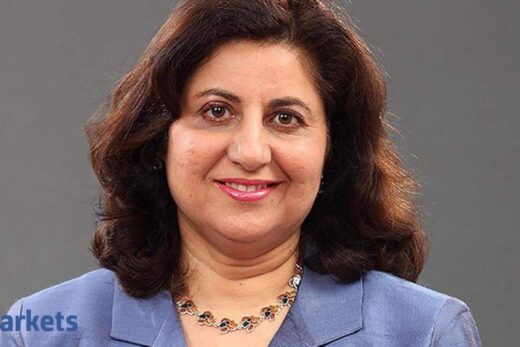Also, in contrast to the trend of downgrades seen over the last few years, FY22 and FY23 earnings estimates continued to remain steady. In fact, if realised, the FY22 earnings growth estimates of 35% as per sell-side consensus would be its highest since FY04.
As a consequence of this strong earnings growth, Nifty profits-to-GDP ratio is at a five-year high of 2.2%. However, as it is still below the long-term average of 2.5%, is there a case for the profit-to-GDP ratio to mean-revert?
Such a mean reversion would imply a new corporate profit cycle.
It has been the case over the last few years that whenever corporate profitability-to-GDP ratio has declined, each year’s expectations were that this ratio would catch up with its long-term average. So, what is different this time?
Over the last seven years, Nifty earnings have grown by just 3% CAGR owing to a mix of both domestic as well as global factors. Apart from short-term economic disruptions like demonetisation in 2016 and GST implementation in 2017, challenging external environment in the backdrop of rising global trade tensions and tighter liquidity conditions weighed in on earnings growth.
However, the macro factors are beginning to turn more supportive. There is a meaningful thrust towards capital expenditure with the government taking the lead (government capex expected to increase to a 17-year-high of 2.5% of GDP in FY22). There is also a push for creating world class infrastructure through the ongoing execution of the National Infrastructure Pipeline (NIP). Expansion of the infrastructure will not only boost economy-wide competitiveness (India’s logistics cost to GDP is among the highest in the world), but will also result in crowding in of private sector investments.
To boost ‘Make in India’ and lift India’s manufacturing-to-GDP ratio, the government announced the $27billion production-linked incentive (PLI) scheme for 13 key sectors. The implementation of the PLI scheme is under way with global majors like Apple, Samsung, Foxconn and Dell either strong showing interest or having already set up plants to manufacture in India. To facilitate the initiative, many other supply-side reforms have been undertaken, including an overhaul of the labour laws.
There have been other targeted measures including the sharp reduction in corporate tax rates. The PLI will help scale up India’s manufacturing ecosystem, which will have a multiplier impact on the economy in terms of employment, investments and ultimately on corporate earnings as well.
The recently-concluded earnings season also provided some vital clues on the health of India’s corporates. One of the key trends, which has been playing out over the last couple of years, is the market share consolidation in favour of larger/organised players. The pandemic has accelerated this trend, but these businesses were better equipped to deal with supply chain disruptions and volatility in commodity prices compared with the unorganised segment. Additionally, greater focus on use of technology to bring about operating efficiencies has helped enhance competitiveness. Corporate deleveraging is also under way with an improvement in leverage ratios.
Slowly but gradually, the economy seems to be emerging out of the twin balance sheet problem — overleveraged corporates and stress on asset quality of banks which the 2015-16 Economic Survey had highlighted to as the “major impediment to private investment.”
The confluence of the above factors along with support from an improving global growth outlook can potentially result in a higher earnings trajectory for a few more years, a phenomenon which many of today’s market participants have not seen during their investing experience.
In fact, as per Zerodha, India’s largest stockbroker, average age of their clients is just 30 years, which means that many of them have not experienced the previous ‘bull’ phase between 2003-2009 when earnings grew by 25% CAGR. To be sure, the journey is not without its challenges, but there are catalysts which one cannot ignore.



